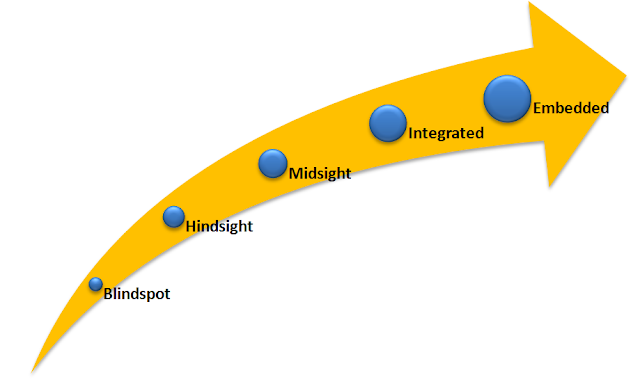Behaviour Change - old habits die hard
Ever wondered why giving up that bad habit is so
hard? This short entry looks at behavioural change and is driven by a piece of
work I have been doing with one of my clients.
Our habits – good and bad - are embedded behaviour
that we have been slowly adapting throughout our lives. Changing habits is
difficult and requires commitment. There is a saying that habits cannot be
thrown out of a second floor window. Instead, they must be coaxed patiently downstairs
and out through the door. This takes time, and it takes application.
But above all else, it needs us to realise that
change is needed.
The change curve diagram on this page (with kudos to
Martin Saville who first ran through this with me as I began my own change
journey) shows us the path of behavioural change. To complete any behavioural
change we must move from being unaware of the need to change, and on through a
commitment to change towards a complete embedding of the new behaviour. Easy
eh?
The diagram shows us that the first step towards
delivering behavioural change is revealing the blindspot.
We all have these, they are the behaviours that we unknowingly exhibit that we
might need to change if we want to achieve more positive outcomes. We don’t
know them, yet sometimes other people might see them. Making the movement
towards change is about increasing your awareness so that the blindspot is revealed.
These blindpsots can also be revealed to us by others – in the form of feedback,
and by various self assessment or 360 feedback tools such as those used by
coaches and development practitioners.
Of course, being aware of the need for change is only
a fraction of the battle. We probably all know things about our own behaviour
that we want to change, but choose not to. We choose to stay the way we are. Change
takes energy, and can be scary too. Often it’s easy to stay the way we are – we
perceive that we have less to loose. In organisations you may sometimes hear
this feeling gain voice when old grumpy guts says “I don’t need training”.
Closed minds don’t make for good learning platforms. Only once we build up an
incentive to change, and create that platform, and with it an appetite for
development, can we choose to do something about it.
Hindsight,
the next point on the behaviour change curve, is that feeling you have when you
realise that you would have behaved differently if you’d been able to wind back
the clock. Hindsight is an essential step towards behaviour change because it
is when you realise that you have a change you want to make, but you just
couldn’t stop yourself.
The next trick of behavioural change is to move from
hindsight to midsight. Midsight is
that moment when you catch yourself in the act of doing that behaviour – and
actively change what you are doing at that moment to create a different
outcome. This is what change is all about. It is that moment when you use a
different strategy to influence a different outcome. Is this where you are at?
Good stuff. You are now well on your way towards change.
The trouble is of course, that just because you have done it once doesn’t mean that you do it every time. Lapses of energy happen. Don’t beat yourself up about it but stay focussed on what you want to achieve. It will take repeated instances of midsight before you can start to say that the behavioural change is integrated into your normal behaviour. At this penultimate stage, changing your old habit may still be a conscious effort, but it is probably becoming more natural, more easily adopted and becoming an integral part of your normal behaviour. If you keep this up, you will soon reach the embedded stage, where you are no longer conscious of making any change, and your changed behaviour is now just part of the way you are.
The trouble is of course, that just because you have done it once doesn’t mean that you do it every time. Lapses of energy happen. Don’t beat yourself up about it but stay focussed on what you want to achieve. It will take repeated instances of midsight before you can start to say that the behavioural change is integrated into your normal behaviour. At this penultimate stage, changing your old habit may still be a conscious effort, but it is probably becoming more natural, more easily adopted and becoming an integral part of your normal behaviour. If you keep this up, you will soon reach the embedded stage, where you are no longer conscious of making any change, and your changed behaviour is now just part of the way you are.
Change complete!
with kudos to Martin Saville - who first made me aware of this model





Comments
Post a Comment